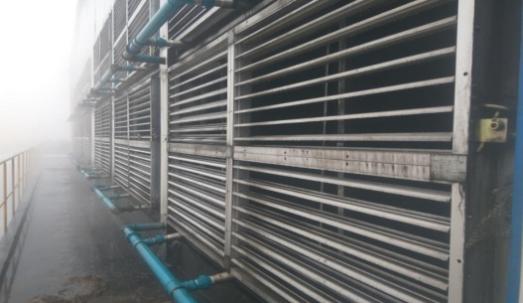With the increasing demand for renewable energy and environmental protection technologies, the utilization of exhausted air in coal mines has become a highly concerned topic. This article will explore the feasibility of utilizing exhaust air in coal mines and conduct in-depth analysis of its economic benefits, in order to provide reference for relevant industries and policy decisions.
Overview of the utilization plan for exhausted air in coal mines
Coal mine ventilation refers to the air volume in the coal mine that cannot be fully utilized due to geological conditions or process equipment limitations during the production process. These exhaust gases have both air volume and heat, and if not properly utilized, they can cause waste of energy resources and environmental pollution.
The utilization plan for exhausted air in coal mines generally includes wind power generation, heating and heating, refrigeration and air conditioning, etc. Among them, waste heat recovery and heating from exhaust air is a common method of utilizing exhaust air. By using the Kcalin exhaust air heat pump unit to convert the low-temperature heat energy in the exhaust air into high-temperature heat energy, it can meet the needs of coal mine wellhead insulation, building heating, and bathing hot water.
Feasibility analysis of the utilization plan for exhausted air in coal mines

Resource conditions: The feasibility of utilizing exhausted air in coal mines depends on the abundance of exhausted air resources. The lack of wind resources in different coal mines may vary, and specific coal mines need to be explored and evaluated.
Technical support: The utilization of depleted wind involves technologies such as wind power generation and thermal energy conversion, and it is necessary to fully leverage the role of technological innovation to ensure the maturity and reliability of related technologies.
Economic investment: The exhausted air utilization plan requires a certain amount of economic investment, including equipment procurement, system construction, and operation and maintenance costs. The investment return period and risk need to be evaluated.
Policy support: Policies and regulations play an important role in promoting the utilization of exhausted air in coal mines. The support and incentive measures of relevant policies will increase the feasibility of the plan.
Economic Benefit Analysis of Coal Mine Exhaust Air Utilization Plan
Energy conservation: The utilization plan for exhausted air in coal mines can convert the previously wasted exhausted air energy into electrical or thermal energy, saving the consumption of traditional energy and reducing the operating costs of coal mines.
Environmental benefits: Waste air utilization is a clean energy utilization method that can reduce greenhouse gas emissions and environmental pollution from coal mines, and is environmentally friendly.
Energy self-sufficiency: Through wind power generation and other depleted wind utilization schemes, coal mines can achieve energy self-sufficiency and reduce dependence on external energy.
Economic benefits: The economic benefits brought by the utilization plan of exhausted air in coal mines include energy conservation, effective utilization of coal resources, and the development of renewable energy, which have a positive impact on the economic benefits of coal mines.
The utilization plan for exhausted air in coal mines has shown certain advantages in feasibility and economic benefits. Through scientific exploration and evaluation, selecting suitable methods for the utilization of exhausted air in coal mines, combined with policy support, can achieve efficient utilization of resources, environmental protection, and sustainable economic development. However, achieving these potential advantages requires the joint efforts and support of mining and scientific research institutions, promoting the promotion and application of exhausted air utilization schemes in coal mines, and contributing to the transformation of clean energy and sustainable development.







Comment